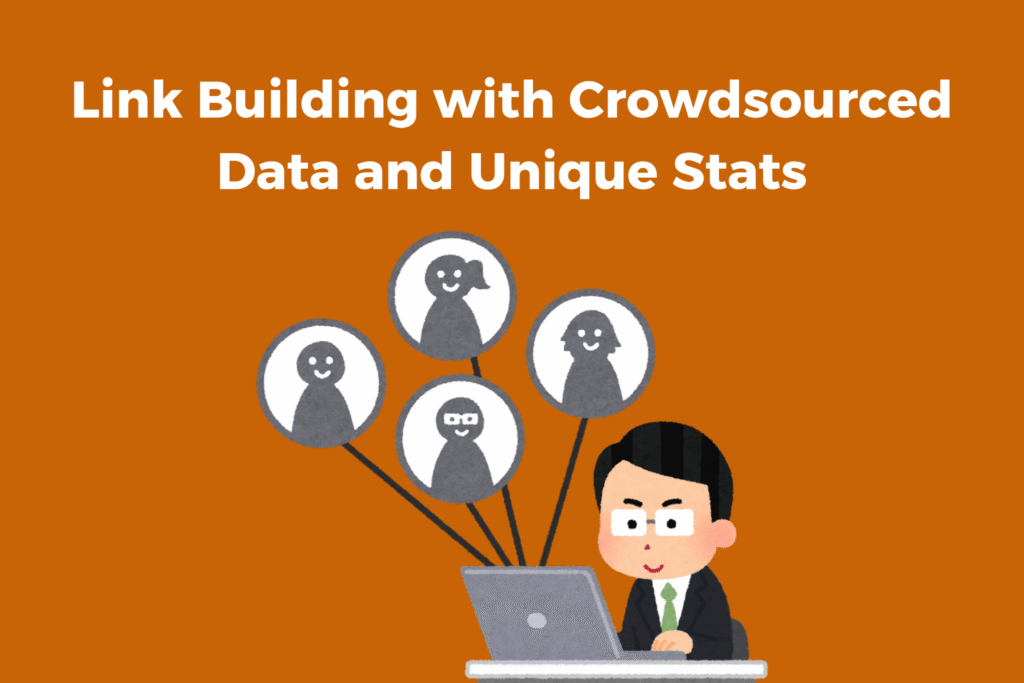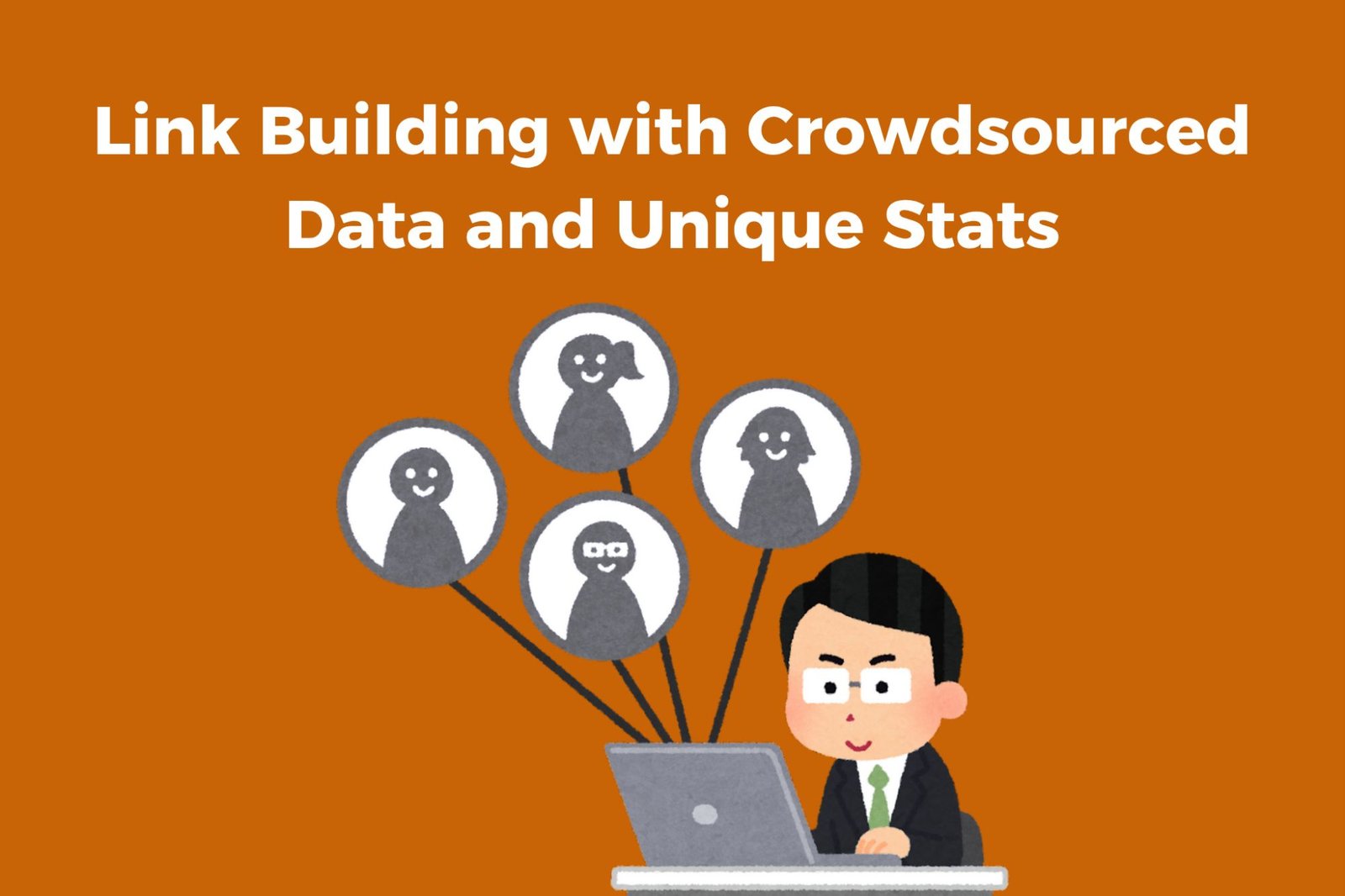
In the ever-evolving landscape of SEO, link building remains a cornerstone strategy for enhancing online visibility and authority. One innovative approach gaining traction is leveraging crowdsourced data and unique statistics to create compelling, link-worthy content. This blog delves into the power of data-driven link building, exploring why content backed by original research earns high-quality backlinks and how the psychology of linking to facts and stats can boost your site’s credibility. We’ll discuss the trust and authority that publishers associate with data, illustrated by real-life examples of viral, data-backed content.
You’ll learn how to measure results and prove ROI using tools like Ahrefs, SEMrush, and Google Search Console, and discover strategies for reporting to clients or internal teams. We’ll also explore scaling the process with automation and AI tools, including ChatGPT, Excel, and Notion, to streamline data gathering and analysis. Our outreach strategy section will guide you in pitching your data to journalists and bloggers, while our tips on turning data into link-worthy content assets will help you create engaging visualizations and reports. Finally, we’ll cover ethical and effective methods for collecting crowdsourced data, highlighting its advantages over traditional sources. Whether you’re new to data-driven link building or looking to refine your approach, this blog offers valuable insights and practical strategies to enhance your SEO efforts.
html
Why Data-Driven Content Earns High-Quality Backlinks
The Psychology of Linking to Facts and Stats
Have you ever noticed how often you link to articles filled with compelling data? It’s not just you. We all have a natural inclination to trust numbers and statistics. When content is backed by solid data, it feels more credible and authoritative. This is why data-driven content is a magnet for high-quality backlinks. Publishers and bloggers love linking to content that provides factual insights, as it enhances their own credibility.
Trust and Authority: Why Publishers Love Linking to Data
In the world of digital content, trust and authority are king. When you publish data-driven content, you position yourself as an expert in your field. This is why publishers are eager to link to your work. They want to associate with content that is not only informative but also trustworthy. By providing original research and unique stats, you offer something valuable that others want to share.
Real-Life Examples of Viral, Data-Backed Content
Let’s dive into some real-life examples of how data-driven content can go viral and earn those coveted backlinks:
- Case Study Reports: Companies often publish detailed case studies showcasing their success stories. These reports, filled with data and analysis, are frequently cited by industry blogs and news outlets.
- Original Research Articles: Think about the last time you read a groundbreaking research article. These pieces often become reference points for other writers, leading to numerous backlinks.
- Infographics: Visual data representations are highly shareable. Infographics that present complex data in an easy-to-understand format are often linked by various websites.
By focusing on data-driven link building and creating content that offers original research backlinks, you not only enhance your site’s authority but also build a network of high-quality links that can significantly boost your SEO efforts. Remember, the key is to provide value through well-researched and engaging content.
What Is Crowdsourced Data and Why Use It for SEO?
Definition and Advantages Over Traditional Data Sources
When we talk about crowdsourced data, we’re referring to information gathered from a large group of people, typically via the internet. This data is often more diverse and dynamic compared to traditional data sources. For SEO, crowdsourced data can be a game-changer. It provides fresh insights directly from real users, which can enhance your content’s relevance and authority.
Cost-effective and Authentic: Data Straight from Real Users
One of the biggest advantages of using crowdsourced data for SEO is its cost-effectiveness. Unlike traditional data collection methods, which can be expensive and time-consuming, crowdsourcing taps into the collective knowledge of users at a fraction of the cost. Plus, because this data comes straight from real users, it tends to be more authentic and reflective of current trends and opinions.
Crowdsourced vs. Scraped or Curated Data
It’s important to distinguish between crowdsourced data and other types of data like scraped or curated data. While scraped data is often collected without user consent and curated data is selected by experts, crowdsourced data is voluntarily provided by users. This makes it not only more ethical but also more reliable for creating linkable assets and user-generated stats that can boost your SEO efforts.
Why Choose Crowdsourced Data for SEO?
- Relevance: Direct insights from your target audience.
- Engagement: Encourages user interaction and participation.
- Trustworthiness: Builds credibility with authentic data.
- Cost Efficiency: Reduces expenses compared to traditional methods.
Incorporating crowdsourced data into your SEO strategy can significantly enhance your content’s value and appeal. By leveraging user-generated stats, you create linkable assets that not only improve your search rankings but also foster a deeper connection with your audience. So, why not give it a try and see the difference it can make?
How to Collect Crowdsourced Data Ethically and Effectively
In today’s digital age, collecting crowdsourced data can be a game-changer for your content strategy. Whether you’re using surveys, polls, or social media threads, it’s crucial to approach data collection with both ethics and effectiveness in mind. Let’s dive into how you can achieve this balance.
Understanding Your Tools
Before you start, familiarize yourself with the tools available for data collection. Popular options include:
- Typeform: Known for its user-friendly interface and customizable forms.
- Pollfish: Offers access to a diverse audience for quick survey responses.
- SurveyMonkey: A robust platform with advanced analytics features.
Defining Your Sample Size and Audience
To ensure your data is reliable, consider the following:
- Sample Size: Aim for a sample size that represents your target audience. Larger samples generally provide more accurate insights.
- Audience Targeting: Use demographic filters to reach the right people. Platforms like Google Forms and Twitter/X polls allow for targeted distribution.
Ensuring Ethical Data Collection
Ethical considerations are paramount when collecting data. Here are some tips:
- Transparency: Clearly communicate the purpose of your survey and how the data will be used.
- Consent: Always obtain explicit consent from participants before collecting their data.
- Privacy: Ensure that personal information is protected and anonymized where possible.
Validating Your Data
Once you’ve collected your data, validation is key to ensuring its accuracy and reliability:
- Cross-Verification: Use multiple sources to verify the data collected.
- Consistency Checks: Look for patterns or anomalies that might indicate errors.
Conclusion
By following these guidelines, you can collect crowdsourced data that is both ethical and effective. This not only enhances your content strategy but also builds trust with your audience. Remember, the key to successful data collection lies in understanding your tools, targeting the right audience, and maintaining ethical standards throughout the process.
Turning Your Data into Link-Worthy Content Assets
In today’s digital landscape, creating link-worthy content is essential for boosting your website’s authority and visibility. By transforming your data into engaging visual content, you can attract backlinks and enhance your SEO efforts. Let’s explore how you can turn your data into compelling content assets that others will want to link to.
Data Visualizations: Infographics, Charts, and More
Visual data content like infographics and charts can make complex information more digestible and shareable. When you present data visually, it becomes easier for your audience to understand and engage with your content. Here are some tips to create effective visual data content:
- Use clear and concise visuals that highlight key data points.
- Incorporate a consistent color scheme to enhance readability.
- Ensure your visuals are mobile-friendly and easy to share.
How to Format Stats to Make Them Link-Attractive
Formatting your stats in a way that makes them appealing and easy to link to is crucial. Here’s how you can do it:
- Present data in a story format to engage readers emotionally.
- Use bullet points and numbered lists for easy scanning.
- Include original stats that offer unique insights or perspectives.
Examples of Successful Data-Led Content Campaigns
Successful data-led content campaigns often leverage unique insights to capture attention. For instance, a campaign that analyzed social media trends to predict future fashion styles gained significant traction and backlinks. Another example is a report on consumer behavior during holiday seasons, which was widely cited by industry blogs and news outlets.
By focusing on creating original stats for backlinks and presenting them in a visually appealing manner, you can develop content that not only attracts links but also establishes your site as an authoritative source. Remember, the key to link-worthy content is offering value and insights that others find irresistible to share.
Outreach Strategy: How to Get Links from Your Data

Finding Relevant Journalists, Bloggers, and Niche Sites
When it comes to data outreach for backlinks, the first step is identifying the right people to contact. You want to target journalists, bloggers, and niche sites that are genuinely interested in your data. Here’s how you can find them:
- Use tools like BuzzSumo or Ahrefs to discover influencers in your industry.
- Search for articles related to your data topic and note the authors.
- Join industry-specific forums and groups to connect with potential contacts.
By focusing on these strategies, you can build a list of contacts who are more likely to be interested in your data.
Outreach Templates and Subject Lines That Get Opens
Crafting the perfect outreach email is crucial. You want your email to stand out in a crowded inbox. Here are some tips and templates to help you get started:
- Subject Line: “Exclusive Data on [Topic] Just for You”
- Template:
Hi [Name],I hope this message finds you well. I recently came across your article on [Topic] and thought you might be interested in some exclusive data we’ve gathered on the subject. Our research reveals [Brief Insight]. I’d love to share more details with you if you’re interested.
Best, [Your Name]
Remember, personalization is key. Tailor each email to the recipient to increase your chances of getting a response.
Pitching Your Data as a Unique Resource or Citation
Once you’ve caught their attention, it’s time to pitch your data as a valuable resource. Here’s how you can do it effectively:
- Highlight the uniqueness of your data. Explain why it’s different from what’s already out there.
- Provide a brief summary of your findings and how they can benefit the recipient’s audience.
- Offer to provide additional insights or exclusive access to your data.
By positioning your data as a unique and valuable resource, you increase the likelihood of earning links and citations.
In conclusion, data outreach for backlinks is all about building relationships and offering value. By finding the right contacts, crafting compelling outreach emails, and pitching your data effectively, you can successfully earn links with data. Remember, the key is to be genuine and provide real value to your contacts.
Scaling the Process: Automation & AI Tools
In the ever-evolving world of SEO, leveraging automation and AI tools can significantly enhance your link-building strategy. By automating data gathering and formatting, you can save time and focus on more strategic tasks. Let’s dive into how you can use these tools effectively.
Automating Data Gathering and Formatting
Imagine having a tool that collects and organizes data for you while you sip your morning coffee. Automation tools can do just that, allowing you to gather large datasets without the manual hassle. This not only speeds up the process but also reduces human error, ensuring your data is accurate and reliable.
Using ChatGPT, Excel, and Notion for Pattern Finding & Insights
Combining the power of ChatGPT, Excel, and Notion can transform how you analyze data. Here’s how you can use these tools:
- ChatGPT: Use it to generate ideas and insights from your data. It can help you identify trends and patterns that might not be immediately obvious.
- Excel: Excel remains a powerhouse for data analysis. Use it to create pivot tables and charts that visualize your data effectively.
- Notion: Organize your findings in Notion for easy access and collaboration. It’s a great tool for keeping your insights structured and shareable.
AI Tools for Summarizing, Charting, and Outreach
AI tools can also assist in summarizing complex data, creating charts, and even automating outreach efforts. Here’s how:
- Summarizing: Use AI to condense lengthy reports into digestible summaries, making it easier to communicate findings with your team.
- Charting: AI-driven charting tools can automatically generate visual representations of your data, helping you spot trends at a glance.
- Outreach: Automate your outreach process with AI tools that personalize emails and follow-ups, increasing your chances of securing valuable backlinks.
By integrating these AI tools into your workflow, you can automate SEO research and data analysis, making your link-building efforts more efficient and effective. Remember, the key is to use these tools to complement your expertise, not replace it. Embrace the technology, and watch your SEO strategy soar.
Measuring Results and Proving ROI
Tools to Track Earned Links
When it comes to tracking backlinks from data content, tools like Ahrefs, SEMrush, and Google Search Console are your best friends. These platforms provide comprehensive insights into where your links are coming from, helping you understand the impact of your link-building efforts.
- Ahrefs: Offers detailed backlink analysis, showing you the quality and quantity of links pointing to your site.
- SEMrush: Provides a robust backlink audit tool, helping you identify toxic links and track your link-building progress.
- Google Search Console: A free tool that gives you a direct look at how Google views your backlinks, essential for understanding your SEO ROI from stats.
How to Tie Data Content to Ranking Improvement
Connecting your data content to ranking improvements involves a strategic approach. Start by analyzing the keywords that your content is targeting. Use these insights to track changes in your search engine rankings over time. By correlating these changes with your link-building KPIs, you can demonstrate the effectiveness of your strategy.
For instance, if you notice a spike in rankings for a particular keyword after publishing a data-driven article, it’s likely that your content is resonating with your audience and search engines alike. This is a clear indicator of SEO ROI from stats.
Reporting Strategies for Clients or Internal Teams
When it comes to reporting, clarity and transparency are key. Whether you’re presenting to clients or internal teams, your reports should clearly outline the progress and results of your link-building efforts. Here’s how you can structure your reports:
- Overview: Start with a summary of the objectives and the strategies implemented.
- Data Insights: Use visuals like charts and graphs to present data on backlinks, traffic, and ranking improvements.
- Analysis: Provide an analysis of the data, highlighting successes and areas for improvement.
- Recommendations: Offer actionable insights and next steps to continue improving SEO performance.
By following these strategies, you can effectively communicate the value of your link-building efforts, proving the ROI and reinforcing trust with your audience.
Conclusion
In the ever-evolving landscape of digital marketing, leveraging crowdsourced data and unique statistics for link building offers a powerful strategy to enhance your online presence. By tapping into the collective intelligence of the crowd, you not only gain access to a wealth of diverse insights but also create content that resonates with a broader audience. This approach not only boosts your site’s authority but also fosters a community-driven environment that encourages engagement and trust.
Quality and relevance are the cornerstones of successful link building, and incorporating unique stats derived from crowdsourced data ensures that your content stands out in a saturated market. By prioritizing these elements, you can build a robust backlink profile that not only improves your search engine rankings but also establishes your brand as a thought leader in your industry. Embrace this innovative approach to link building, and watch as your digital footprint expands with authenticity and credibility.
